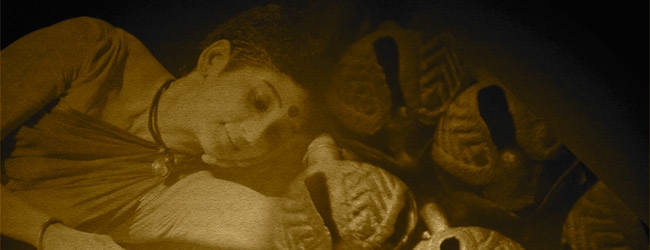LOOKING BACK: "MARGAPRAVESAM & AMBAPRAVESAM" by ANITHA
19th November 2007, Bharatiya Vidya Bhavan, Chennai
INTRODUCTION,SYNOPSIS & REVIEW
INTRODUCTION
In ordinary terms this could have been called her arangetram, but both she and I saw it as something more than just getting on stage. For Anitha, it was the affirming of her commitment to Dance and moving into the next phase of her artistic journey. An entry into a path - a path that is uncertain, lonely, painful and yet exciting, fulfilling and elevating. For me- the satisfaction of passing on what I know to the next generation, to see my creative instinct and vision expressed through another person; one in whom I see commitment, dedication, single-pointed focus, sensitivity, respect for tradition and yet the openness to view tradition through a modern lens. And ultimately, teaching Anitha gives me joy.
Nirmala Seshadri
SYNOPSIS
The performance is divided into two parts.
In the first part, the traditional pattern is followed to a large extent. However, there is a shift of emphasis from the student’s first entry onto public stage to an entry into the tradition itself. In effect the term ‘Margam’ takes on another significance: that of the path or journey through the tradition. As is usual in the tradition, it is the male deity who is invoked in this segment.
The second part symbolises the dancer’s first step into another space. Margam is taught by the teacher but there is an ultimate Guru which the student begins to approach. Varnam, the piece in the traditional repertoire which contains all the elements of the form, takes on another hue, and serves as an entry into that other space which is higher than technique, concept or emotion; a spiritual space. In order to fully realise the female consciousness, the dancer begins to communicate with the Ultimate by focusing on a female deity, the empowering Mother Goddess.
REVIEW
Anitha- Margapravesam
When Nirmala invited me to the Margapravesam & Ambapravesam of her fourteen year old student I must admit I decided to attend without expectations. In other words I didn't expect too "see much" that would either hold my interest, let alone inspire me!
But I realised soon enough that this was "different" from the word 'go'. Different, yes... but was it going to be enough? I asked.
Entry: Anitha danced her way to centre stage clad only in a salwar khameez and her long hair knitted into a beautiful traditional braid.
Her anjali of ringing the bell and adorning it with flowers gave even the inanimate bell a poetic importance rather than being reduced to a mere prop.
The jathiswaram showed her competence in rhythm. It was not a traditional margam- yet it had not deviated from the grammar. Nirmala must be applauded on treating the "performance" with such delicacy that only a craftsman handling porcelain could!
Anitha excelled herself in the kriti Baro Krishnayya. An oft seen item on stage, yet it was rendered so differently. Anitha not only played with the little Krishna but took the audience to experience bhakti through vatsalya bhava- such intensity in a young girl-child of fourteen is beyond human understanding.
"Mogudocchi Pilachedu" where she plays the child bride seemed to perfect and tailor-made for her. Though she faltered in her Thillana, her body kept pace with rhythm at all times.
It was in the second half of the performance- Ambapravesam, that Anitha was at her best. The dramatic entry she made clad in a green skirt walking from across the aisle onto the stage was truly memorable.
There was a general building up of nritta and bhava from the first item to the last- very gradual and effective. As Meenakshi, Anitha was captivating. Nirmala sitting underneath the bell to recite the jathis was again out of the ordinary.
The musicians were given ample scope to deliver their best rendering and the result was sheer magic.
All of us went back home with a little bit of dance in our hearts!
HEMA RAMANI
13th Dec 07


